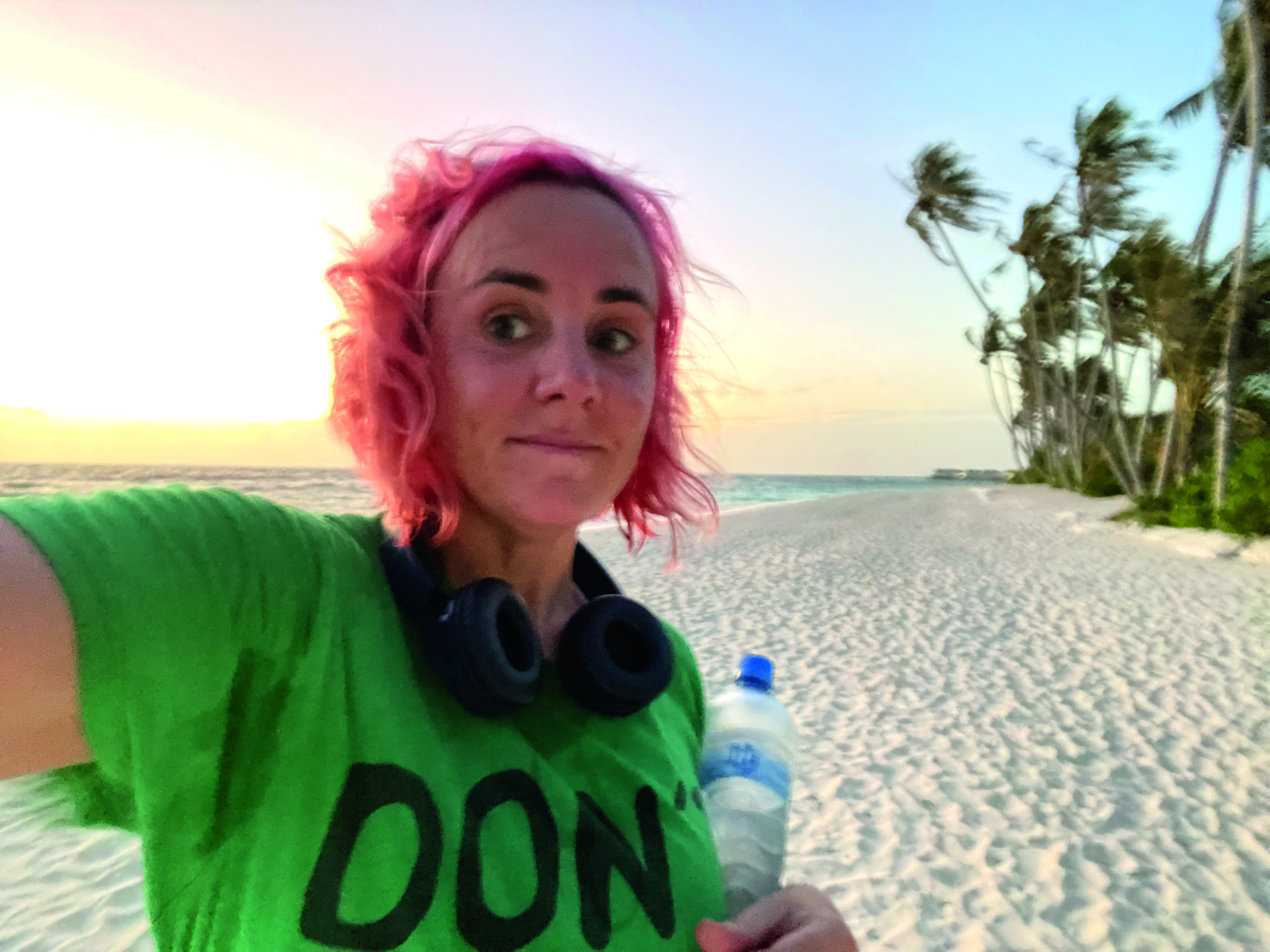In the glass-clear waters off the Maldives’ Raa Atoll, something akin to an underwater circus is taking place. The reef manta rays that have gathered near our boat streak through the water, unfurling their wings as they perform barrel rolls, somersaults and sudden dives. They disappear into the depths before magically reappearing, mouths agape and cephalic fins (horn-like structures used for feeding) curled as they gulp down tiny plankton virtually invisible to the naked eye.
Watching marine biologist Jess Haines in action is no less impressive – even more so given she hasn’t been blessed with the ability to breathe underwater. Jess trails the manta rays as they perform their acrobatics, snapping pictures of their undersides.
- Manta ray guide: how to identify, how they feed and natural habitat
- Coral reefs guide: what is coral and coral bleaching, and species to spot

Manta ray bellies, known as ‘ventral surfaces’, each bear a unique pattern of spots that act much like a human fingerprint. In the absence of tags, which are banned in the Maldives, photos enable scientists to identify every individual and thus monitor movements, population dynamics and feeding and breeding hotspots. Given that reef manta rays are now listed as Vulnerable by the IUCN, with populations increasingly affected by overfishing and bycatch, this is vital research.
Jess’s love affair with mantas began after she completed her zoology degree. Arriving in the Maldives in 2017 to work as a marine biologist and dive instructor on Dhaalu Atoll, she saw – and fell in love with – reef manta rays (reef mantas are smaller than their cousins, the oceanic manta rays, which are listed as Endangered). Jess started sending photos of individuals she encountered to the Manta Trust, a conservation organisation founded in 2011, helping to build a database in an area where it had no staff. In 2018, she joined the team as manager of the Maldivian Manta Ray Project. Protecting these spectacular marine creatures was now her day job.
They swirl through the water en masse, bright shafts of sunlight illuminating their smooth, pale skin.
Mantas love the Maldives year-round, feasting on blooms of plankton. They never leave the archipelago, as far as scientists know, simply migrating between atolls or from east to west of a single atoll as the seasons change and plankton blooms. During mass feeding events, most common from September to November, dozens of these creatures can be seen swirling through the water en masse, the bright shafts of sunlight illuminating their smooth, pale skin.
Maamunagau Island, located on the south-western tip of Raa Atoll, is a particular manta magnet, thanks to its large lagoon. Ocean currents sweep plankton towards this semi-enclosed area, transforming it into a rich feeding ground for these winged wonders. Another manta hotspot is the nearby Baa Atoll Biosphere Reserve’s Hanifaru Bay.
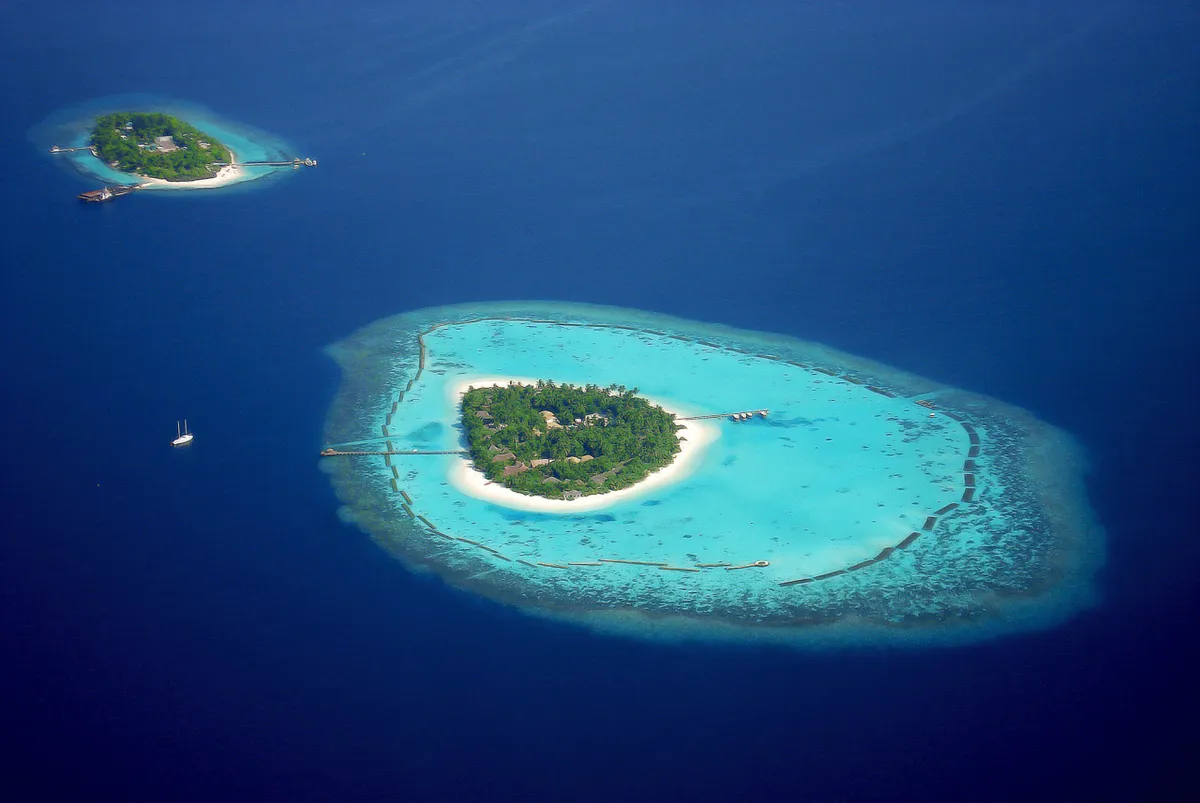
“Every atoll has mantas, but some only have around 200 individuals. Here at Raa, there are more than 1,000,” says Jess. The prevalence of the species has allowed scientists to document behaviours unique to mantas, whether it’s their spectacular mating rituals (which tend to occur between October and November), when up to 30 potential suitors trail behind the female, copying her acrobatic manoeuvres until only one remains, or their equally spectacular ‘somersault feeding’ behaviour, when mantas gulp down plankton while performing 360˚ loops.
The team is also learning about mantas’ migratory routes within the Maldives and how they use cleaning stations – these are locations where they congregate to be cleaned by fish that spruce up their mouths and gills by removing parasites and dead skin.
Taking photographs of the mantas is a crucial part of Jess’s research, but maintaining the database is time-consuming work. Software is in development, but most identification simply has to be done by eye. When the mantas crank up their acrobatics, Jess’s job gets slightly easier, but she often has to dive down below her subjects to bag her shot. She’ll hold her breath and kick hard, using her fins to aid her descent. Given the buoyancy of salt water and the various obstacles to navigate, which include the mantas’ colossal wings, it can be tricky.
The photo research is contributing to two major studies. One relates to proving that the waters surrounding Maamunagau are a manta nursery (an area with a high number of juveniles), which requires meeting various criteria on elasmobranch (shark and ray) nurseries. “It’s about whether the mantas spend extended periods of time here, and how they use the area,” says Jess. “We pretty much know that Maamunagau is a nursery; we just need to prove it.”
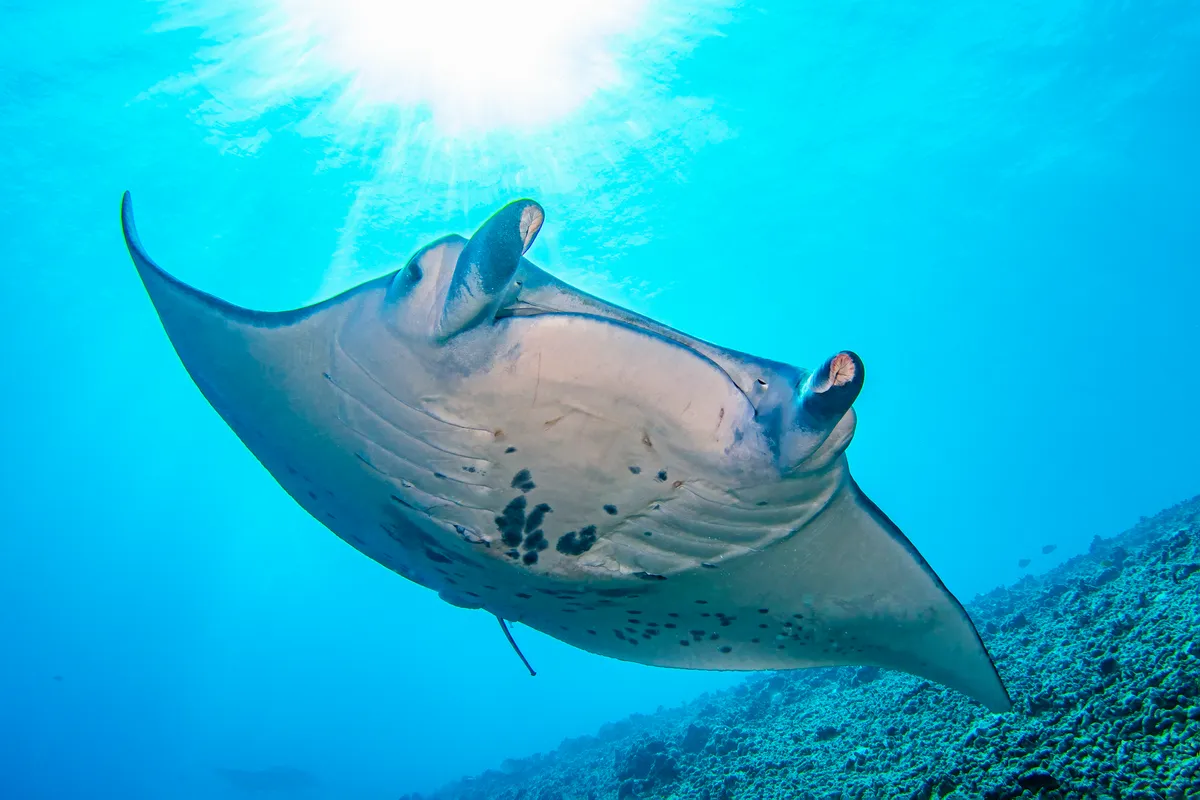
The second aims to assess the impact of boat traffic on the species, something that has never been studied before, and to work with the government to designate the waters around Maamunagau as a Marine Protected Area (MPA). This would mean introducing restrictions on boat activity and employing rangers to enforce them. “We know boats have a negative impact,” says Jess. “They can disrupt feeding behaviour and in worst scenarios, strike through the mantas that can't move out of the way fast enough.”
MPA status should increase the area’s draw to wildlife tourists. For years, scientists here have used holidaymakers’ interest to their advantage, leading manta masterclasses and taking guests on excursions that enable them to partake in citizen science. There are more than 104,000 photos on the database, many of which have been provided by tourists. Those lucky enough to glimpse a never-before-documented individual are given the privilege of naming it – recent additions include a particularly fine specimen christened Manta Claus.
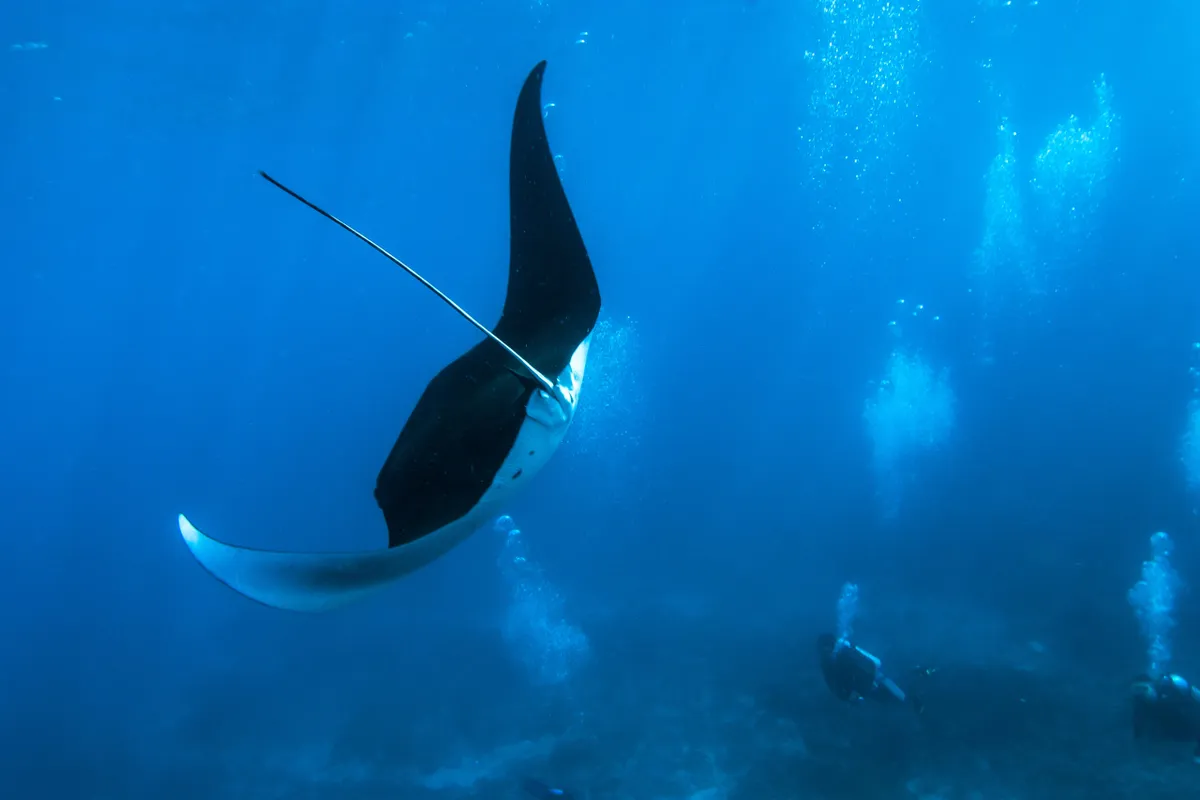
Mantas may be thriving here, but populations have been decimated elsewhere by overfishing, especially in the waters surrounding nearby Sri Lanka, where the world’s largest oceanic manta ray fishery harvests hundreds of individuals on a daily basis. The industry is driven by the almost insatiable demand for manta gill plates for use in traditional medicine in places such as China and Hong Kong, where there’s a widespread belief that consuming mantas’ gills, used to filter seawater from plankton, can filter toxins and cure disease.
Databases of belly snaps might seem like an old-school approach compared to electronic tags, but the tagging ban in the Maldives is a reminder of the government’s awareness that preserving marine life is key to preserving the country’s appeal to tourists. In 2014, the Maldivian government added mantas to its list of protected species, making it illegal to capture, keep or harm them. Foreign vessels are not permitted to fish here, and any fishing that does take place can only be carried out using a pole and line.
Yet there is still plenty of tech that is aiding research. Underwater cameras are used to monitor activity around cleaning stations, while drones allow the researchers to cover larger areas in less time. “Drone technology has added a whole new dimension to our studies,” says Jess. “Without it, we’d simply be standing on boats looking into the water. Drones have revealed new areas where mantas are feeding – areas we’d never have visited previously.”
There’s stereo video photogrammetry (SVP), too, used to measure wingspans. Two GoPro cameras, mounted on a bar and positioned at exact angles, are used to film a ray from behind. When analysed on a computer, the footage can be used to produce wingspan measurements.
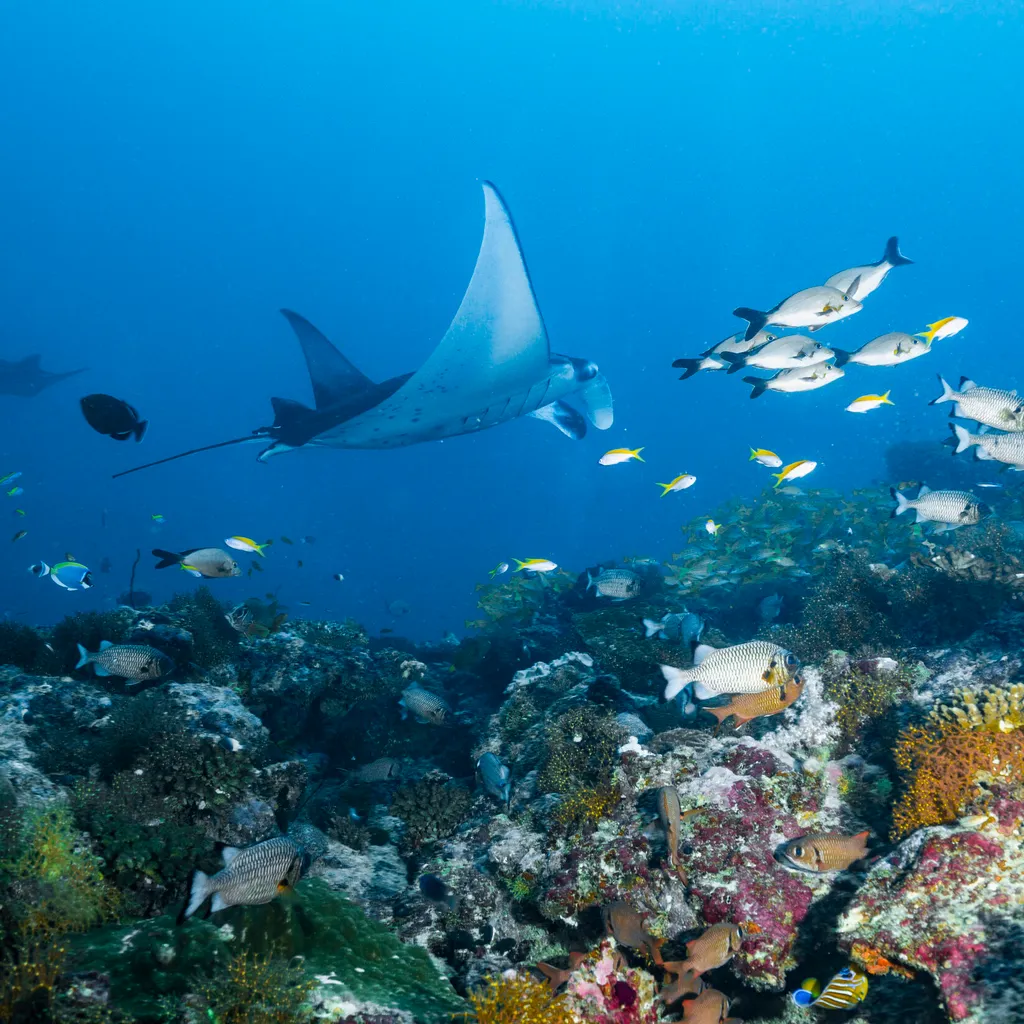
But it’s the device used to perform ultrasounds that impresses me the most. In 2019, University of Cambridge researchers used the world’s first contactless underwater ultrasound scanner to obtain images of a manta’s foetus. The scanner simply needs to be held about 5cm over an individual to produce clear images of its reproductive structures. This device, which can be used at depths of up to 30m underwater, has allowed scientists to deduce not only if a manta is pregnant, but to gather information about reproductive cycles.
Studying one image, I can clearly see the baby manta, its tiny wings swaddling its body. “It’s wrapped up like a little burrito!” says Jess. Jess hopes that the first live birth will soon be caught on camera – so far, one stillbirth has been photographed in the wild, and one manta has been filmed giving birth in an aquarium in Japan.
The research aims to assess the impact of boat traffic on mantas.
Protection of mantas requires a team effort, and that includes the local community. On a visit to one nearby island I join local schoolchildren on their regular beach clean. The debris we find includes items washed up from a distant resort and remnants of ‘ghost nets’ (old fishing nets), a reminder that, irrespective of regulations imposed locally by the government, there will always be threats and repercussions washing in from distant waters.
Take a seaplane over the Maldives and the largely uncontrolled creation of new resorts – often on artificial islands made with sand dredged from the seabed and dumped over marine habitats – and it can be hard to believe the government understands the importance of this precious ecosystem. Yet the many tourists who flock to these islands come to enjoy the marine life, creating a huge financial incentive to protect manta rays and other marine species. This is why the mantas' future is looking bright in the Maldives.
“Hopefully, we’ll soon have great protective measures in place for this area. We don’t want it to become a circus – Raa Atoll still has this wonderful quietness about it, and we want to preserve that,” says Jess. “So little is known about mantas, but the threats they face are increasing. That’s why I’ve made it my ambition to gain a better understanding of them, in the hope that this information can be used to inform decisions and get manta rays the protection they deserve worldwide.”
About the author
Tamara Hinson is a freelance writer who covers travel and wildlife. Her happy place is anywhere in Asia (Japan, India and the Maldives in particular), though she’s also got a weak spot for mountains. She stayed in the Maldives courtesy of the InterContinental Maldives Maamunagu Resort, which partners with the Manta Trust.
Keen to find out more about mantas?
If you’ve been inspired by this feature and would like to discover more about these beautiful creatures, check out our collection of features about manta rays, including our expert manta ray guide and how to tell the difference between skate vs ray.
